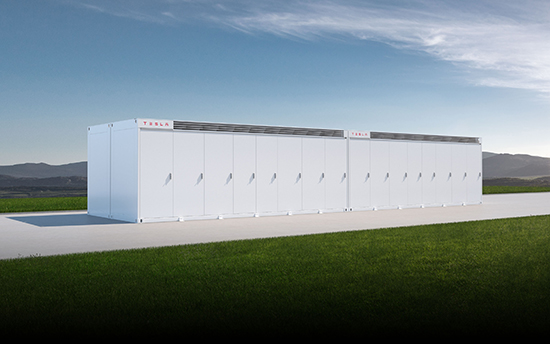New uses for batteries in Australia’s energy network could reduce the cost of providing critical inertia into the grid by up to 80 per cent, according to modelling from Lumea and TransGrid.
As the electricity industry transforms towards renewables, the increase in solar and wind generators and subsequent decrease in coal and gas generation means NSW is facing an ‘inertia gap’ sometime between 2024 and 2029.
While South Australia has approved the installation of the first synchronous condensers to be built in Australia since 1954, NSW has opted to trial a world leading alternative, lower cost solution: grid-scale battery generated inertia.
Why worry about the inertia gap?
Up to ten times each year, energy grids experience critical incidents such as lightening strikes on a transmission line, or generator failure which results in the load flicking on and off into the grid.
The network is designed to be able to ride through those problems because of inertia: it’s the continuous flow of energy that comes from having huge mechanical turbines in coal or gas fired power plants that spin constantly under their own weight, creating inertia.
One of the biggest challenges to accelerating the uptake of renewables into the grid is that solar and wind generators don’t require turbines to generate electricity and so don’t produce their own inertia.
Synchronous condensers are effectively standalone mechanical turbines, and have life expectancies of up to 50 years. It means the establishment costs can be up to $500 million which is likely to be passed on to end users.
How is battery inertia different?
Lumea and TransGrid will be testing battery inertia at the new $62 million grid-scale battery which is due to be operational by October. One of the first of its kind in the world, the Wallgrove battery in Western Sydney will be monitored to see how it responds to frequency deviations that occur as a result of incidents on the network.
“High speed monitors on the network pick up the data and we expect to see a very fast, anticipatory response from the battery,” Lumea spokesperson Nigel Buchanan says.
Current batteries work retroactively, so that when frequency spikes or drops and moves outside a particular frequency band, then the battery is triggered and provides active power into the network to rectify the frequency deviation.
New technology in the Wallgrove battery, however, can detect a change in the property of the electricity that’s flowing in the network. “We’ll be monitoring to see how well the battery anticipates that withing half a second that the frequency will have moved outside the particular band and automatically kicks in to arrest that change and hopefully moderate the frequency deviation and head off the incident,” Buchanan says.
“The point is we already know that Australia can build synchronous condensers for hundreds of millions of dollars, but we want the data from Wallgrove to say, batteries do work as an alternative, preferable solution,” he says.
Is battery inertia low cost?
Modelling by TransGrid and Lumea suggests within the next energy market regulatory period, between 2024 and 2029, NSW is likely to need 240MW of battery inertia to address the gap left once fossil fuel generators are retired. At 50MW the Wallgrove battery will go some way to helping and Lumea is currently scoping partnerships to build more grid scale batteries to provide additional inertia.
“When these batteries are operating in ‘inertia mode’, it’s literally less than a second up to no more than six seconds, but you need a huge amount of power for that very short period.
“What that means is we can provide those short bursts without interrupting provision of other market services. Infigen Energy is leasing more than 50 per cent of the battery for market services, so we’re testing now how to properly orchestrate that and understand the limits to the control systems and what they can and can’t do.”
The benefit of having multi-use batteries is that it reduces the cost of providing grid-scale inertia. Mechanical synchronous condensers can only provide inertia, and are significant pieces of infrastructure costing up to half a billion dollars.
Batteries have shorter technology lives which means instead of a 50-year turbine, we can provide two generations of batteries that last about 20 years each, at an estimated cost of about $60 now, and then again when the new battery is installed. It makes the immediate cost to consumers much lower, akin to $1 instead of $10, Buchanan says.
Will more batteries be built now?
Grid scale batteries can help lift capacity on the network, provide synthetic inertia and potentially support system strength, which is voltage rather than frequency fluctuations. However, current regulations require inertia be provided in a particular way, and it’s not clear whether battery generated synthetic inertia will be accepted under the current rules.
It’s a big step for Lumea and its shareholders to take the plunge and test this crucial new technology, Buchanan says. “It’s important that Lumea and TransGrid learn as much as we can about batteries because we know many will ultimately be connected to the NEM and with Wallgrove we’ll hopefully show a much more cost effective pathway to solutions that will be useful not just in Australia, but around the world.”
The Wallgrove Grid Battery Project received funding from ARENA as part of ARENA’s Advancing Renewables Program.
The views expressed herein are not necessarily the views of the NSW Government. The NSW Government does not accept responsibility for any information or advice contained herein.


